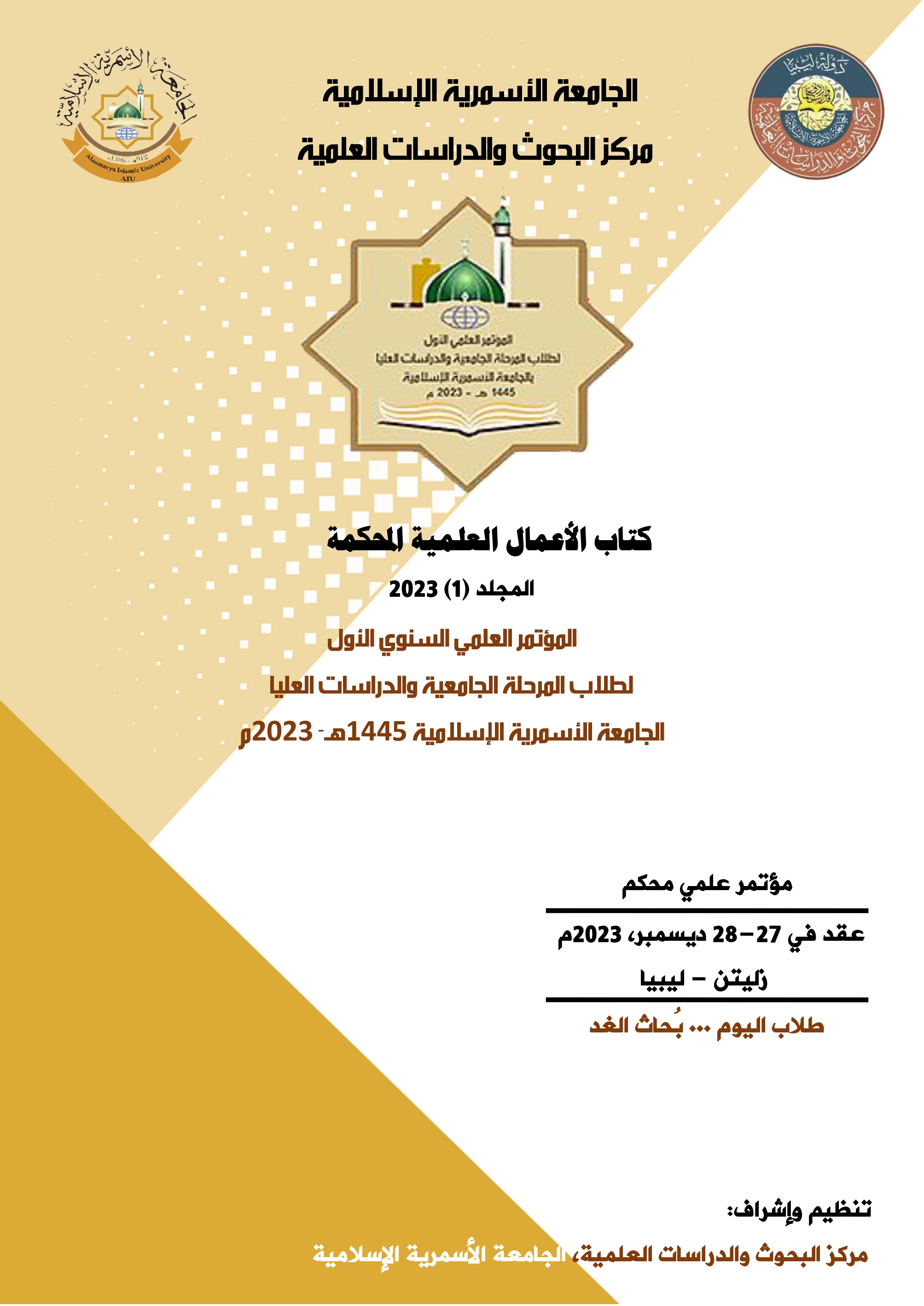أثر الائتمان المصرفي على الناتج المحلي الإجمالي الليبي خلال الفترة 1995-2020: دراسة تطبيقية على المصارف التجارية الليبية
الكلمات المفتاحية:
الائتمان المصرفي، الناتج المحلي الإجمالي، الاقتصاد الليبي، المصارف التجاريةالملخص
إن الهدف من هذا البحث هو قدرة المصارف التجارية في استخدام الودائع كوارد سياسي لتمويل نشاطها الائتماني والاستثماري وقد بدائنا بالخطوة الأولى وهي الدراسة التمهيدية واتضح لنا أن النشاط الائتماني للمصارف التجارية في توسع مستمر وتعمل المصارف التجارية كغيرها من المشروعات الاقتصادية على تحقيق أقصى عائد ممكن من خلال استخدام الودائع ومن هنا تقوم المصارف التجارية بتشجيع عمليات الائتمان والادخار. ثم تأتي الخطوة الثانية في عمل المصارف التجارية وهي النشاط الائتماني ثم عملية منح القروض ومن ثم انتقلنا إلى الدراسة التحليلية ووجدنا أن المصارف التجارية تخضع لإشراف المصرف المركزي وبالتالي أثبت المصرف المركزي وجوده؛ وبالإضافة إلى ذلك أعطى القانون لمصارف ليبيا سلطة التفتيش والمراقبة لضمان إدارة الجهاز المصرفي. وأوضحت نتائج النموذج القياسي لأثر العلاقة بين الائتمان المصرفي والناتج المحلي الإجمالي النظر إلى أنها موجبة ومعنوية ومتوافقة مع أسس النظرية الاقتصادية، حيث انه كلما ارتفعت حجم الائتماني المصرفي والقروض الممنوحة من قبل المصارف التجارية كلما قامت القطاعات الاقتصادية المختلفة بزيادة حجم الاستثمار وبالتالي يرتفع الناتج المحلي الإجمالي. بينت نتيجة المرونة أنه كلما ارتفعت الائتمان المصرفي بنسبة 1% ارتفع الناتج المحلي الإجمالي بنسبة 83%، وهي نسبة ضعيفة، أي أن الناتج لا يستجيب لزيادة الائتمان المصرفي بمعدلات مرتفعة بالرغم من ارتفاع الائتمان المصرفي، والسبب في ذلك يعود إلى الاستخدام غير الكفؤ في المشروعات الصناعية والزراعية والخدمية ذات جدوى اقتصادية ومالية.
التنزيلات
المراجع
أولا: المراجع باللغة العربية
إبراهيم، ابتسام (2015). أثر منح الائتمان المصرفي في ربحية المصارف التجارية. رسالة ماجستير، كلية الاقتصاد والعلوم السياسية، جامعة طرابلس، ليبيا.
باب الله، إبراهيم احمد محمد (2023). أثر القروض المصرفية الممنوحة في النمو الاقتصادي الليبي دراسة قياسية للفترة (1990-2017). مجلة جامعة فزان الإنسانية، 2(1).
الخضيري، محسن (1987). الائتمان المصرفي: منهج متكامل في التحليل والبحث الائتماني. مكتبة الأنجلو المصرية، ط2.
خطيب، منال (2004). تكلفة الائتمان المصرفي وقياس مخاطره بالتطبيق على أحد المصارف التجارية السورية، رسالة ماجستير كلية الاقتصاد، جامعة حلب، سوريا.
خلف، عمار حمد (2011). قياس تأثير تطور الجهاز المصرفي على النمو الاقتصادي في العراق. مجلة العلوم الاقتصادية والإدارية، 17(64)، 179.
الرشيد، عبد المعطي؛ جودة، محفوظ (1999). إدارة الائتمان. دار وائل، عمان، الأردن.
الزعبي، هيثم (2000). الإدارة والتحليل المالي. دار الفكر الحديث، عمان، الأردن.
شرف، س؛ والصايغ، و. (2020). أثر بعض مؤشرات النظام المالي على النمو الاقتصادي في سورية. مجلة جامعة تشرين- سلسلة العلوم الاقتصادية والقانونية، 42(6).
عبد الحميد، عبد المطلب (2000). البنوك الشاملة (عملياتها - وإدارتها). الدار الجامعية، الإسكندرية، مصر.
عبد القادر، عطية عبد القادر محمد (2005). الاقتصاد القياسي بين النظرية والتطبيق. الدار الجامعية للطباعة والنشر، ط 2.
الفرجاني، ابراهيم و البرغثي، زكريا (2022). استخدام نموذج Altman في التنبؤ بتعثر شركات التأمين الليبية. مجلة ابن خلدون للدراسات والأبحاث، 2(1).
ثانيا: المراجع باللغة الإنجليزية
Baliamoune-Lutz, M., & Ndikumana, L. (2008). Corruption and growth: Exploring the investment channel. Economics department working paper series, 33.
Blinder, A. S., & Stiglitz, J. E. (1983). Money, credit constraints, and economic activity. NBER WORKING PAPER SERIES, Paper No. 1084.
Hofman, B. (2001). The relationship between private sector credit and GDP in industrialized countries: A VAR approach (1980–1995). Journal of Economic Studies, 28(3), 211-227.
التنزيلات
منشور
إصدار
القسم
الرخصة
الحقوق الفكرية (c) 2023 مراد ميلاد شرننه ، فرج منصور العبدي

هذا العمل مرخص بموجب Creative Commons Attribution 4.0 International License.





